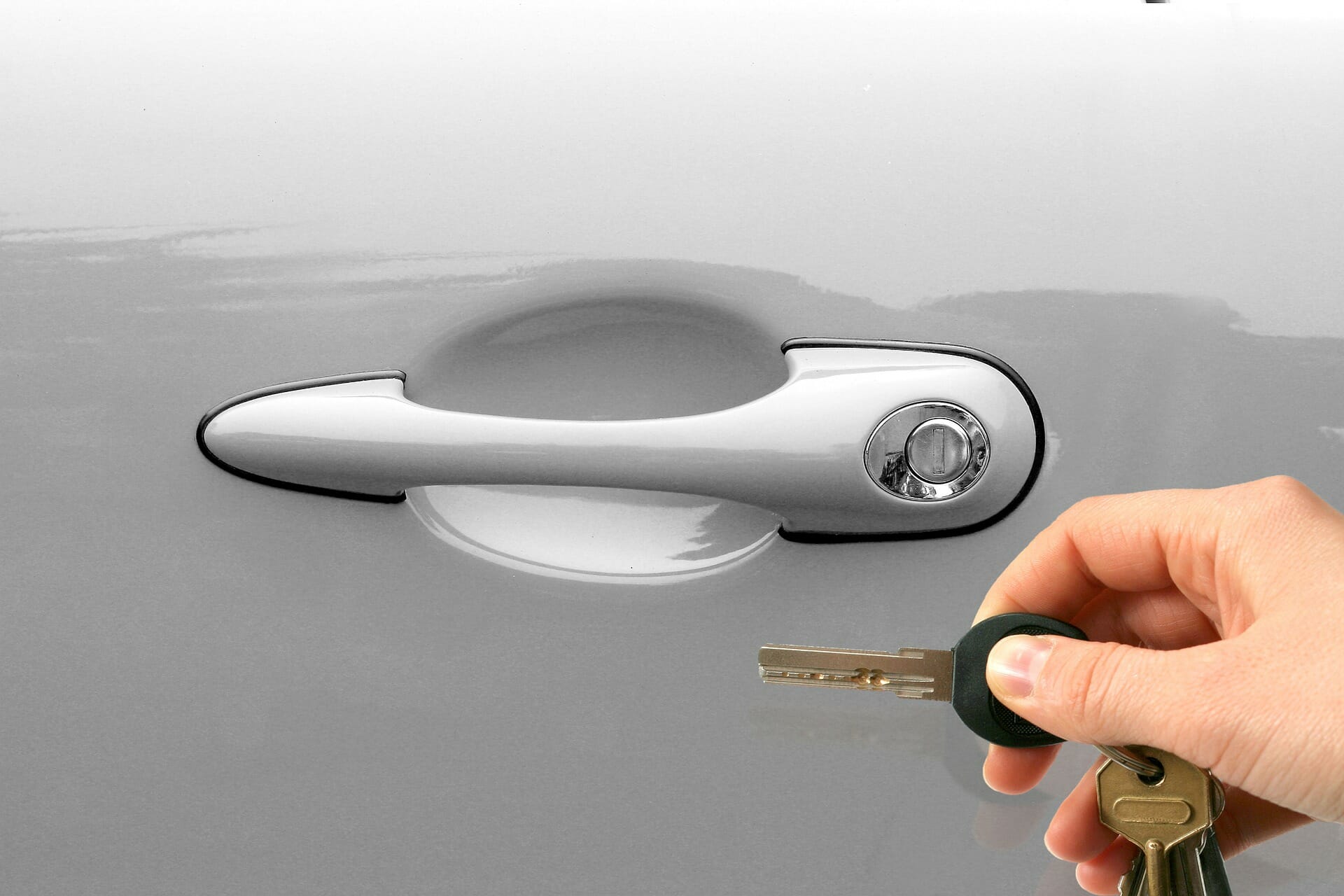Last updated on April 3rd, 2024
When it comes to credit cards, one of the most important terms you need to understand is APR, which stands for Annual Percentage Rate. Your APR is usually a direct result of your credit profile, but rewards and banks also play a critical role. Have you ever wondered what the average interest rate on a credit card? Here are the average credit card APRs for different types of credit cards and different credit scores.
Table of Contents
How Credit Card Interest Works
Credit card interest is more than a monthly line item in your statement or a number printed on the credit card issuer envelopes you still receive via snail mail. Quite simply, it is the fee that you pay for the ability to borrow money. This interest rate is known as an annual percentage rate or APR.
Credit card issuers make a significant portion of their profits through interest payments. Suppose you carry a balance on your credit card. In that case, you can anticipate paying extra in addition to your overall purchase prices.
Credit card issuers calculate the interest you owe by multiplying the daily interest rate and adding it to your balance. This daily interest rate is your annual APR divided by the number of days in the year (365 in most cases).
Here is a quick example to demonstrate how to calculate your daily interest rate:
- Credit card APR: 15%
- Current balance: $500
Let’s say your current credit card balance is $500, and that card features a 15% APR on purchases. If you divide that 15% by 365, you’ll get a daily interest rate of 0.041%. This means that an outstanding balance of $500 would accrue $0.20 in interest every day. Should the balance remain the same for the whole billing period, you would owe $6.15 in interest at the end of the month, for a grand total of $506.15 owed.
What's the Average APR?
According to the United States Federal Reserve, the average credit card interest rate currently hovers around 23%. But interest rates can vary significantly depending on the card type, rewards, the bank, and your credit health.
By Credit Score
Those with better credit scores can expect lower interest rates. This statement holds up in almost every aspect, but statistics show that those with average (or fair) credit scores pay higher interest than those with bad credit or no credit. But why?
The reason for the higher APR for fair credit vs. bad credit has to do with the type of interest rates these cards offer. “Bad credit” cards usually have a fixed-rate APR. This static rate means issuers can offer a set rate for a wide range of credit scores at the same time. Those with no credit or a poor credit score often get secured cards. Cards that require a deposit feature a fixed APR.
People with fair credit scores have better access to quality cards. Because of this, they usually receive cards with a variable APR. But, since their credit score is subprime, they still receive worse offers than those with good or excellent credit.
| Score | APR |
|---|---|
| Excellent Credit | 24.49% |
| Good Credit | 27.49% |
| Average Credit | 29.24% |
| Bad Credit | 31.74% |
| No Credit | 29% |
By Deposit Types
The difference between unsecured cards and secured cards is similar to the variations by credit score. Better credit scores receive variable interest rates, with better scores getting a lower interest rate. Secured cards typically offer fixed rates, on the other hand. Secured cards also provide collateral, making banks more willing to offer lower rates.
By Credit Card Type
Student cards offer highly competitive APRs because they provide smaller credit limits. Credit unions, on the other hand, provide exceptional value since they are member-owned and operated. Where larger banks use profits to satisfy shareholders through dividends or other investments, credit unions are not-for-profit companies. This status means that profits return to members – providing them with unbeatable APRs.
0% APR27.24% |
Balance Transfer27.49% |
Business28.49% |
Credit Union26.24% |
Low APR26.49% |
Student27.99% |
By Rewards
Rewards credit cards offer higher interest rates versus balance transfer cards or low APR cards. Higher rates are due to the value of the points or miles on offer. Because of the larger APRs, these cards are poor choices for carrying a balance. Without a 0% rate intro offer on purchases or balances, applicants should be wary about carrying a balance. Instead, pay the full monthly statement balance and avoid interest building up.
What Is APR?
What exactly does “APR” mean? APR stands for annual percentage rate. APR is a basic formula that combines the U.S. Prime Rate and the issuing bank’s interest margin to show a cardholder how much they’ll owe if they don’t pay their statement balance in full each month.
Understanding APR is important because it allows you to compare different credit card offers and select the one that suits your financial needs and goals. By knowing the APR, you can evaluate the cost of carrying a balance on your credit card and make informed decisions regarding your spending habits.
What's the Current Prime Rate?
As mentioned, APR is directly impacted by the Prime Rate. The Prime Rate is the interest rate the Federal Reserve charges top clients for borrowing money. The Wall Street Journal publishes this rate, which the Fed updates regularly. Banks then extend credit lines to consumers and attach their own interest rates, known as a margin. Combining these two figures allows people to reach the APR.
CURRENT PRIME RATE:
8.5%
Different Types of APR
The above figures cover the purchase APR. This figure is the interest rate cardholders pay when they have a statement balance. There are other types of APR, however, including:
- Balance Transfer APR: The cost of transferring the balance of one credit card to another.
- Cash Advance APR: The cost of borrowing cash from your credit line.
- Penalty APR: The cost of payment APR when you miss payments.
- Introductory APR: A special APR on purchases or balance transfers that runs for a set time.
How Is APR Calculated?
Calculating credit card APR may seem complex, but it follows a standard intuitive method. Most credit card issuers use the average daily balance method to calculate interest charges. Here’s how the average daily balance meethod works:
- The outstanding balance on your credit card is recorded at the end of each day.
- The daily balances are added and divided by the number of days in the billing cycle to calculate the average daily balance.
- The average daily balance is multiplied by the APR and divided by 365 to determine the daily interest charge.
- Finally, the daily interest charges are calculated to provide you with the total interest you owe.
It is important to note that the method of calculating APR may vary slightly among credit card issuers, so reviewing the terms and conditions specific to your credit card is always advisable.
Factors That Impact Credit Card Interest Rates
Okay, so I can check out all the latest interest rate calculations here – so what?
Keeping up-to-date on the latest APR trends can help you when shopping for your next credit card. Knowing what the average interest rates are on different card types can let you better gauge if the offer your bank gives you is fair, what other applicants with a similar credit profile to yours are getting, and if it’s time to ditch your current issuer for an exciting new offer elsewhere.
Several factors influence the credit card APR you are offered. One of the primary factors is your creditworthiness, which is determined by your credit score. Lenders consider your credit score to indicate your ability to repay the borrowed amount. The higher your credit score, the lower the risk you pose to the lender, resulting in a more favorable APR.
Another factor that affects credit card APR is your choice of credit card. Credit cards come with varying interest rates based on their features and benefits. Credit cards with rewards programs or premium perks often have higher APRs than basic cards.
Furthermore, the current economic conditions and the overall interest rate environment can impact credit card APR. When interest rates set by the central bank rise, credit card APR also tends to increase. Keeping track of these external factors is essential to anticipate any changes in your credit card’s APR.
The Impact of High Credit Card APR
Having a high APR on your credit card can have significant, dangerous implications for your personal finances. The biggest consequence of high interest rates is the increased cost of borrowing. With a high APR, the interest charges on your credit card or loan balance accumulate much more rapidly, potentially leading to a more significant debt burden over time.
High APRs can also make it challenging to pay down your credit card balance in quickly. High interest charges may take up a substantial portion of your monthly payment will go towards interest charges rather than reducing the principal amount owed. This can prolong your debt repayment journey and result in a long-term financial burden.
Credit Card Payoff Calculator
Our helpful credit card repayment calculator can help figure out how long it’ll take to pay off your debt and how much you’ll pay in interest:
Tips for Handling High Credit Card Interest Rates and APR
Getting a high-interest rate on your credit card doesn’t have to be the end of the world. There are several strategies you can employ to manage your credit card APR effectively, including:
| Maintain good credit health | A strong credit score can help you secure lower APRs. Make sure to pay your bills on time, keep your credit utilization low, and avoid applying for multiple credit cards within a short period. | ||
| Pay in full | By paying your credit card balance in full each month, you can avoid paying any interest charges altogether. This not only saves you money but also helps improve your credit score. | ||
| Avoid cash advances | Cash advances on credit cards often come with higher APRs and additional fees. It is best to avoid using your credit card for cash withdrawals unless absolutely necessary. | ||
| Negotiate a lower rate | If you have a good payment history and credit score, you may be able to negotiate a lower APR with your credit card issuer. It’s worth contacting customer service and explaining your situation to see if they can offer you a better rate. | ||
FAQs About APR
- Each issuer has a differing repayment model, but generally you can expect your minimum payment to be heavily influenced by your APR, total balance, and any fees. It therefore follows that if you want a lower monthly payment, you should try lowering your APR by boosting your credit score.
- APR is the cost of borrowing on your credit card. The term refers to the yearly interest rate you’d pay if you carry a balance, and it often varies from card to card. That is the easiest way to view your APR.
- The cash advance APR is the interest rate an issuer charges when you use the card to withdraw cash – in much the same way you would at an ATM. Cash advance APRs tend to be higher than purchase or balance transfer rates.
- Balance transfer APR refers to the interest rate charged when transferring other card balances to another credit card. Balance transfers often charge a fee of $5 or 3% of the transaction, whichever is greater, and feature an APR the same (or nearly the same) as purchase APR.
- A high interest rate is simply any credit card with an APR higher than the averages listed above. A low interest credit card – or low APR credit card – is any card with an APR lower than the average rates above.
- Your APR may increase if you do not make your regular payments. Additionally, missing payments will result in negative comments on your credit file, in turn lowering your credit score. Missing payments can lead to fees, account closure, wage garnishing, and more.
- No. APR refers to Annual Percentage Rate, or the repayment rate of your credit card., APY refers to Annual Percentage Yield and refers to the yearly return on savings or checking accounts. Credit cards do not pay interest, so APY does not apply. Instead, they charge interest, so require APR.
- For more information about building credit and lowering your APR, check out our handy resources here.
- A high APR can lead to further debt without careful money management. High APR means higher minimum payments and the chance of missing payments.
- The highest credit card APR is the PREMIER Bankcard®, with a fixed APR of 3^.
What’s Next: The Easiest Credit Cards to Get with Bad Credit
Editorial Disclosure – The opinions expressed on BestCards.com's reviews, articles, and all other content on or relating to the website are solely those of the content’s author(s). These opinions do not reflect those of any card issuer or financial institution, and editorial content on our site has not been reviewed or approved by these entities unless noted otherwise. Further, BestCards.com lists credit card offers that are frequently updated with information believed to be accurate to the best of our team's knowledge. However, please review the information provided directly by the credit card issuer or related financial institution for full details.



